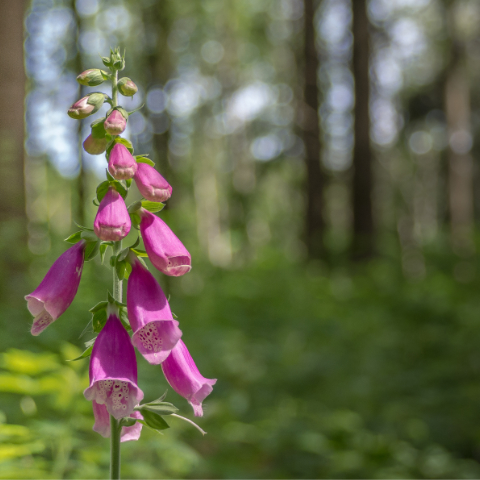Nothing in Basket!




Sow Rate: 1 gram of seeds per meter square
Loved by: Bees
(Shipped within 1 - 3 days)
Position: Lightly shaded, full sun
Soil: almost any type, avoid very wet or very dry
Sow: March - August is best but can be sown anytime
Flowering period: June - September
Hardiness: Hardy biennial or short-lived perennial
Size: 1.5 - 2.5 metres tall
D. purpurea is a biennial or short-lived perennial, freely self-seeding, with a rosette of softly hairy, oval leaves and tall, one-sided spires of pendant, tubular, bright rosy-purple flowers 6cm long, spotted within.
In the first year this species lays down roots and grows leaves, in the second year the flowers will appear then the plant dies. As they self seed, by year three you should have foxgloves flowers every year.
Will grow in almost any soil, but avoid very wet or very dry situations. Prefers a humus-rich soil in partial shade but will grow in full sun. Deadhead after flowering to avoid problems with excess numbers of seedlings.
Potentially harmful
Highly toxic by ingestion. Wear gloves and wash hands after handling
Sowing Rate
See individual product page for sowing rate. Increasing this rate may result in some species out competing others and reducing the rate may result in weeds or grasses dominating. *Tip 1 level teaspoon of wildflower seed is about 1.5g
Flowering Period
Annual species sown in Spring will bloom 8-10 weeks after sowing. Annuals sown in Autumn will bloom the following summer. Perennial species begin to flower the second year after sowing. If managed correctly, these flowers will return year after year.
Ground Preparation
Prepare pots or a bare seedbed in advance of sowing, free of weeds, grass, and other plants so that the wildflower seeds don't have to compete with other plants. This step is essential to establish wildflowers successfully.
Sowing
Maintenance
Cut the plants back to 7cm in height after flowering in the autumn. Remove the cuttings to keep soil fertility low and to not smother emerging plants. Do not apply fertiliser or plant food.
This Seed Contains No Filler
Mix with a Carrier such as sand, sterile compost or Ready Brek to bulk the seed for a more even broadcast.
Nothing in Basket!